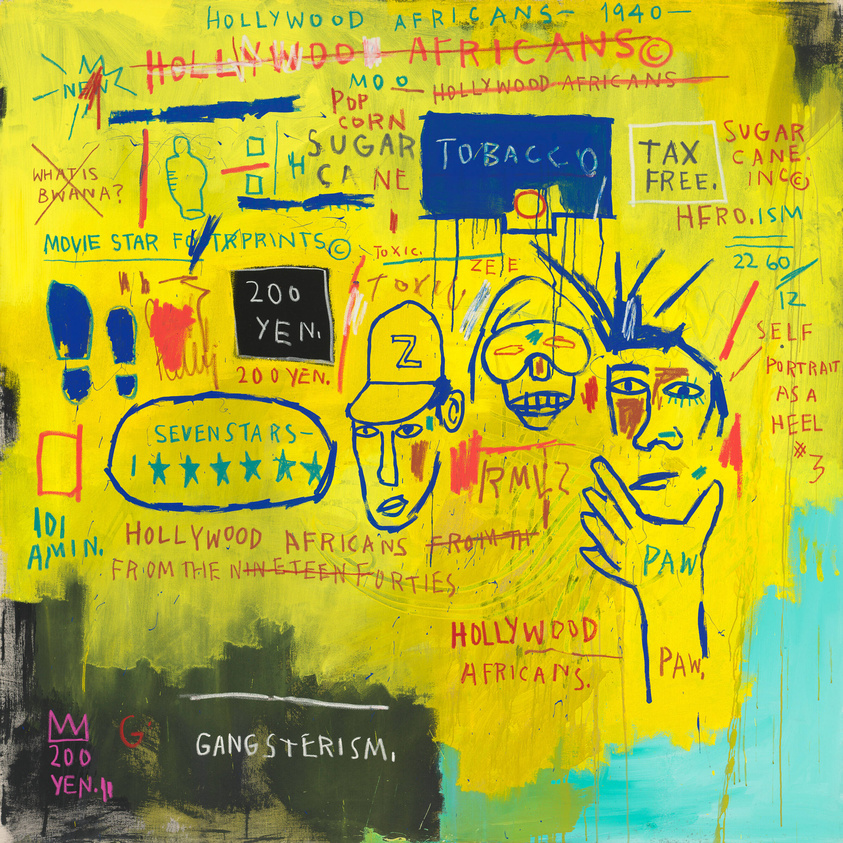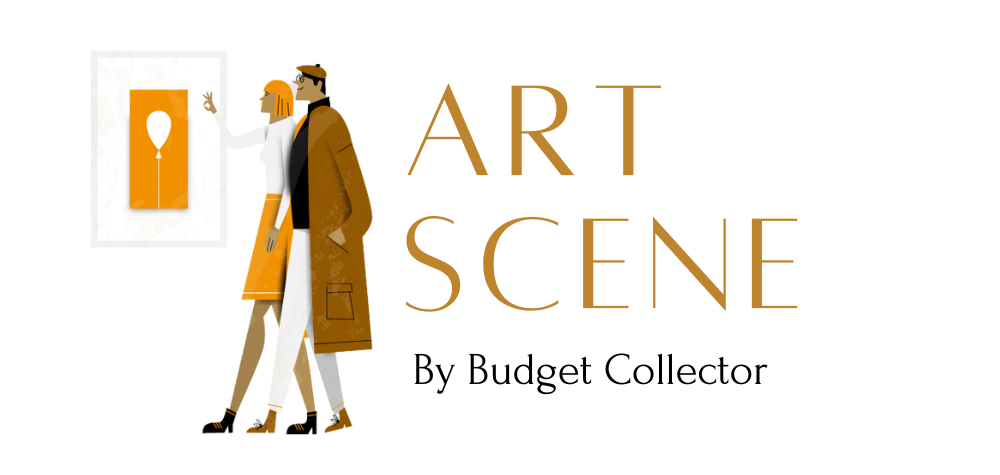


Hollywood Africans is a large-scale painting produced while African American artist Jean Michel Basquiat was in Los Angeles in 1983. Completed in the artist’s unique style, it features three crude portraits of the rapper Rammellzee, the painter Toxic and himself. Alongside the portraits are a host of words and symbols. Basquiat’s great talent was combining and colliding meanings, associations and symbols. In semiotic theory, art historians will talk about the representation of an object or concept on canvas and how that meaning changes depending on the other objects and the wider context. Like poetry or prose, Basquiat layers words and symbols to build up a thunderous and powerful singular message.
Some meanings are more opaque than others. Understanding what is meant by “self-portrait as a heel #3” is central to a clear understanding of the painting. The term “heel” is a wrestling term for the “bad guy” or the actor best suited to play the villain, its opposite being “face” as in “babyface” for the good guy. With Hollywood Africans, Basquiat is presenting his take on the Hollywood film poster complete with title, images of the actors and a seven-star rating. His self-portrait is marked as “heel” because that is the only type of role he believes Hollywood agents cast men of colour. Now, considering the network of signs in the image we can find further ideas that reinforce Basquiat’s suggestion that Hollywood misrepresents black people.
With “WHAT IS BWANA?” in the top left portion of the composition we can see Basquiat has deployed “sous rature” (or crossing out) to intentionally draw the viewer’s attention. The word “BWANA” means “Master”, “Sir” or “Massa” and has long been associated with slavery. Basquiat’s inclusion of this term is another signal the image is about race. Furthermore, its inclusion alongside references to Hollywood suggests that this painting is a critique of African representation in popular film. It could be a specific nod to Call Me Bwana starring Bob Hope. A farcical comedy, where the film’s black actors are limited to stereotypical “African” roles such as bellboys, servants and savages. Alternatively, it could be a reference to an earlier film, Bwana Devil which also presents Africans as primitive, simplistic, dangerous and in need of rescue from civilised white men. Both films demonstrate the Hollywood film industry’s disinterest or inability to create a fair, nuanced and realistic portrayal of black people. Basquiat’s inclusion of “WHAT IS BWANA?” can be combined with “GANGSTERISM”, “SUGAR CANE” and “TOBACCO” to emphasise the limited roles on offer to black people in Hollywood with “SUGAR CANE” and “TOBACCO” making clear that Basquiat attributes this to the history of plantation slavery.
Unpacking our final series of signs requires a short segue into Hollywood history. In 1940, Hattie McDaniel, who played a maid in Gone with the Wind, was the first woman of colour to win the Academy Award for Best Supporting Actress. She approached the stage from segregated seating and graciously thanked the Academy, stating that she hoped she could be a credit to her race. However, as a visual representation of blackness, she continued to be cast in subservient roles and when criticised for this she replied, “I’d would rather be paid $700 a week playing a maid than earning $7 a day being a maid”. McDaniels was an example of a black actress being rewarded for playing the stereotype subservient negro at a time when black actors in roles contrary to this stereotype would be ignored and effectively punished by the Academy. Basquiat is able to signify the story of McDaniel through three signs: the word Hollywood, the outline of the Oscar statuette and the inclusion of the year, 1940. He has reduced her life and complexity to three small inscriptions on a canvas, but by selecting these particular signifiers we are able to discern his subject and what he has to say about the nature of race in Hollywood.
What do the allusions to the life of McDaniels and “WHAT IS BWANA?” tell us about Basquiat’s sense of self? His critique of Hollywood portrayals of black people is obvious, but his inclusion of Rammellzee, Toxic and himself seems to suggest the Hollywood distortion of identity has bled out, off the screen, into the rest of American culture. Rammellzee is a rapper whereas Toxic and Basquiat are both artists, yet all of them by Hollywood terms would be reduced to the “heel”. Their black skin makes them the villain, or at best a subservient racial stereotype like McDaniels. Basquiat is demonstrating that the construction of black identity has been in the hands of white people. Basquiat is using his own art to protest the mass media’s misrepresentation of African-Americans.
February 5, 2024
1980s Art Movements, African American Art, African American Culture, Art and Identity, Art and Social Commentary, Art as Protest, Art Critique, Art History, Cultural Criticism, Historical Context in Art, Hollywood Africans, Jean Michel Basquiat, Postmodern Art, Race and Media, Racial Representation in Media, Rammellzee and Toxic, Representation of Black People in Hollywood, Semiotics in Art, Stereotypes in Hollywood, Urban Art and Graffiti


